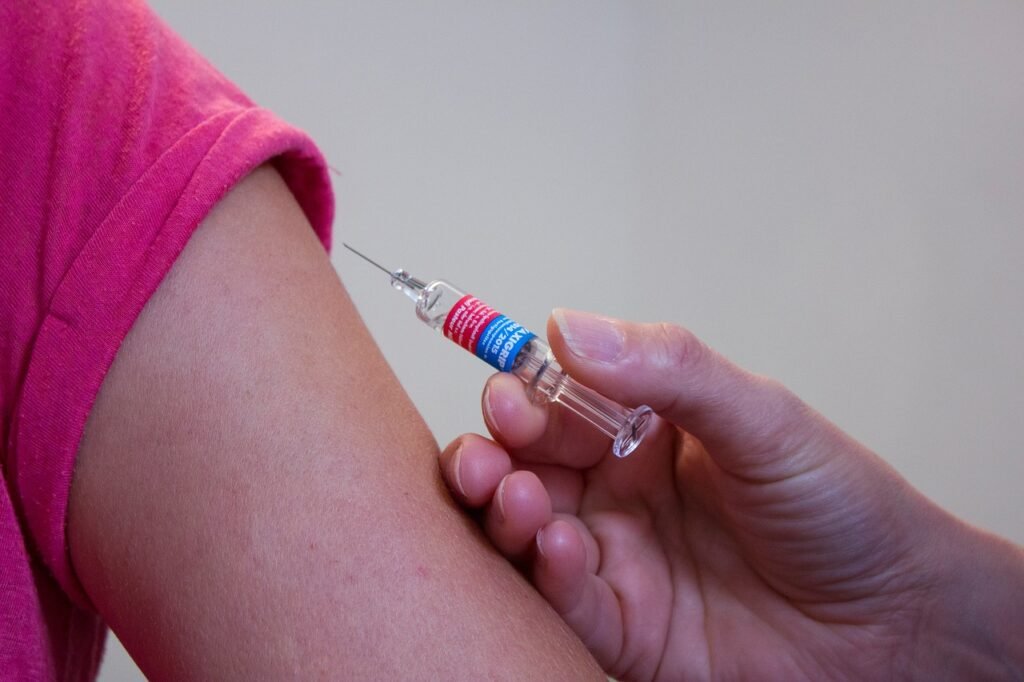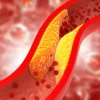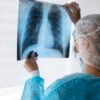Pneumococcal infection is an infection caused by pneumococci bacteria, pneumococci are the normal commensals of the upper respiratory tract, they are the important pathogens of pneumonia and otitis media in children. pneumococcal infections include.
- Pneumonia
- Otitis media
- Meningitis
- Pericarditis
- Sinusitis
- Conjuvtivitis
- Peritonitis Sepsis
- What is the difference between pneumococcal infection and pneumococcal pneumonia?
- What are the common types of pneumococcal infection?
- What are the causes of Pneumococcal infection?
- How pneumococcal infection is transmitted?
- What are the symptoms of pneumococcal infection?
- How can we diagnose Pneumococcal infection/ disease?
- What is the treatment for Pneumococcal infection/disease?
- Who is at risk/ vulnerable to Pneumococcal infection?
- How we can prevent pneumococcal infection?
- Vaccine for Pneumococcal infection/disease?
- When and to whom pneumococcal infection vaccine is given?
- What are the side effects of the pneumococcal infection vaccine?
- Recommendations regarding pneumococcal infection vaccination
What is the difference between pneumococcal infection and pneumococcal pneumonia?
Pneumococcal infection is a disease caused by the pathogen pneumococci, and pneumococcal pneumonia is caused by the pathogen streptococcus pneumonia. They differ from each other in their, Morphology (structure), Bile solubility, Optochin sensitivity, and specific polysaccharide capsules.
Mainly both cause the same symptoms, both are gram-positive bacteria, both are of the same pathogen family, and both affect the upper respiratory system.
What are the common types of pneumococcal infection?
There are many types of pneumococcal infection according to the affected specific part, but mainly we distinguish them based on the portal of transmission that is Invasive and noninvasive.
Invasive
Invasive pneumococcal infection -In this, the bacteria invade the body through the skin or from any wounded part of the body, this type of pneumococcal infection is more fatal because by this invasion bacteria enter directly into the bloodstream.
Noninvasive
Noninvasive pneumococcal infection- in this the bacteria enter the body through inhalation, it is the most common type of pneumococcal infection.
What are the causes of Pneumococcal infection?
As many diseases are correlated to pneumococcal infection, causes can be primary or secondary.
The primary cause
The primary cause is direct contact with pneumococci pathogen, cross infection from a person already having pneumococcal infection.
Secondary cause
The secondary cause is when the person has a chronic disease like HIV, or cancer or person is on immunosuppressant medication that makes a person vulnerable to bacterial infections.
Another cause
- In children is Improper immunization.
- Malnourished child.
- Underweight for age child.
- Aspiration of fluid into the lung.
- Exposure to extreme cold mainly in the case of infants.
How pneumococcal infection is transmitted?

pneumococci is a pathogen that causes pneumococcal disease, pneumococci is a commensal of the upper respiratory tract that is the nose, mouth, nasal cavity, throat, and voice box. It means pneumococci reside on the surface, either body or mucous of the upper respiratory tract, when a person’s upper respiratory tract gets triggered by any foreign particle it may be a virus or other bacteria, and infection is created by other viruses or bacteria when exceeds to the lower respiratory tract.
Then pneumococci pathogen multiply and cause pneumococcal symptoms. The wide multiplication of pneumococci in the lower respiratory tract increases the rate of spread of infection. Mainly affects children under 5 years of age.
Transmission is from the source ( primary carrier of infection) to the new host ( vulnerable to infection) through air, droplets, and saliva.
What are the symptoms of pneumococcal infection?
The symptoms are shown mentioned below:-
In infants
for infants, every symptom is alarming as
- Poor feeding of an infant.
- Lethargy.
- Nasal flaring.
- Grunting.
- Air hunger.
- Irritability.
- Respiratory distress.
In children
- 2 months to 5 years – mild symptoms are fever and nonproductive cough. Severe symptoms are when the breathing rate is faster than normal according to age.
- Chest indrawning.
- Wheezing sound.
- Grunting.
- Dehydration.
- Tachypnea.
- cyanosis.
- Coarse crackles.
In adults
- common for older people also like
- High fever.
- Increase in cough.
- white sputum, blood-streaked sputum, or thick purulent sputum.
- Difficulty in breathing.
- Headache, chest pain, rhinitis, sore throat, anorexia, malaise, increases heart rate.
- The symptoms are more severe for infants and under 5 children’s.
How can we diagnose Pneumococcal infection/ disease?

Pneumococcal infection is detected mainly by sputum gram stain ( it detects pneumococci pathogen by its staining, bile solubility, and specific polysaccharide chain).Chest x-ray for visibility of the infected area.
Complete blood count test for blood cells disturbed values as a result of bacterial attack on blood cells.
In infants- vital signs are checked like blood pressure, body temperature, pulse, respiration, heart rate, the activity of the infant, the weight of the infant, and hydration of the infant. Chest auscultation is done to check crackles, wheezing sounds, and abnormal breath sounds.
What is the treatment for Pneumococcal infection/disease?
- Medical treatment of patients having a pneumococcal infection is done with antibiotics, mainly broad-spectrum antibiotics are used because multiple respiratory tract infections are associated with the pneumococci pathogen. The first line of treatment is parenteral penicillin. However, in many cases, resistance to penicillin is seen. In this case, other broad-spectrum antibiotics are used like ceftriaxone, cefotaxine, and amoxicillin.
- Other supplements are given to improve the immunity of the patient.
- Symptomatic treatment of a patient with pneumococcal infection.
- Oxygen therapy is given to the patient in case of difficulty in breathing.
- The fluid intake of the patient is increased to reduce dehydration.
- The suction of mucus from the infant, using a bulb syringe is done to maintain the infant’s airway.
- Promote bed rest to conserve energy.
- lie on the affected side to splint the chest and reduce discomfort.
- In case of fever, antipyretics are given to the patient.
- Temperature monitoring of patients regularly.
- Cough suppressants are given to reduce mucus formation.
- Postural drainage and physiotherapy are useful for drainage of fluid towards the upper respiratory system.
- Isolation and wearing masks to reduce cross infection of pneumococcal disease.
- Avoid drinking cold fluids this may condense mucous and cause difficulty in breathing.
- Early immunization.
Who is at risk/ vulnerable to Pneumococcal infection?
pneumococcal infection can affect anyone in their lifespan, but some conditions make a person more vulnerable to having an infection like. Children from infancy to 5 years of age, under 5 children are prone to respiratory tract infection mainly pneumococcal infection.
Old age people over 60 years get affected by pneumococcal infection because of less productive work of immune cells and age-related other medical conditions also contribute to the rapid effect of pneumococcal infection.
Immunocompromised persons like persons with HIV, congenital immunocompromised children, and patients in immunosuppressants.Previous chronic medical conditions like diabetes, asthma, kidney problems, arthritis, and cancer. Patients with a habit of smoking are also at risk of pneumococcal infection
How we can prevent pneumococcal infection?
Primordial prevention from pneumococcal infection is done with early immunization of children and population. In primordial prevention development of risk factors is prevented like
Environment condition
in which people live, overcrowded areas like cities are at more risk of having pneumococcal infection, prevenction can be done by educating people to wear masks and minimize close contact with infected persons. Hand hygiene to reduce cross infection.
Economic conditions
As the basic needs of a person or family are satisfied or not, the government should run different schemes to give basic life facilities like food, shelter, education, health facilities, and free immunization to the major population.
Social and behavioral condition
In this the assessment of society and individual behavior how much they are educated about the disease and guide them about signs, and symptoms and how we can prevent infection by good hygienic habits, taking care of children’s diet, and prevention techniques to control the spread of infection.
Vaccine for Pneumococcal infection/disease?

Vaccines have the potential to reduce deaths and severity of the disease. pneumococcal vaccines are classified as conjugate and nonconjugate.
Non-conjugated pneumococcal vaccine for Pneumococcal infection
For years polysaccharide non-conjugate vaccines containing capsular antigens of 23 serotypes have been used. It is also short-formed as PPV23. It is used for children over 2 years of age and for adults. Under 2 years of age, children are immunocompromised and do not respond well to the vaccine.
Conjugated Pneumococcal vaccine (PCV) for Pneumococcal infection
the conjugate vaccine for pneumococcal infection is available in three forms which are PCV 7, PCV 10, and PCV 13.
When and to whom pneumococcal infection vaccine is given?
PCV is administered to infants. As per WHO recommendation 3 primary doses (3p+0) or, as an alternative 2 primary doses and one booster (2p+1) are given.
- (3p+0) can be initiated as early as 6 weeks of age, with an interval of 4-8 weeks between doses. Schedule (3p+0) given in 6,10,14 weeks or 2,4 and 6 months.
- (2p+1) In this 2 primary doses are given during infancy as early as 6 weeks of age, with an interval of 8 weeks between the next dose. the one booster dose should be given between 9-15 months of age.
- PPV23 is given to adults, under 2 years. It is administered as a single intramuscular dose, in infant deltoid muscle or a subcutaneous dose.
Pneumococcal infection vaccine for HIV-positive babies
PVC vaccines are used for HIV-positive and preterm babies. babies who have received their 3 primary doses of vaccine before reaching 12 months of age may benefit from a booster dose in the second year of life. The interrupted schedule should be resumed without repeating the previous doses.
Pneumococcal infection vaccine for old age people
Vaccine PPV23 single dose is administered intermuscular to old age person. In the USA it is routinely advised for everyone aged above 65 years. It is also recommended for persons having sickle cell disease, chronic disease of heart, lung, liver, diabetes mellitus, alcoholism, and organ transplant.
What are the side effects of the pneumococcal infection vaccine?
The side effects of the vaccine can be mild reactions like erythema and tenderness in 50 percent of the population. Mild fever in infants is also seen. The severe side effect is an anaphylactic reaction to the initial dose, it is very rare.
Recommendations regarding pneumococcal infection vaccination
When primary vaccination is initiated, it is recommended that the remaining doses are administered with the same product.
Revaccination is not recommended for those who had an anaphylactic reaction to the initial dose
WHO recommends the inclusion of PCV serotypes in childhood immunization programs worldwide, particularly in countries with high under-five mortalities.
Explore more valuable insights and tips on health, wellness, and lifestyle in our other blog posts related article LDL Cholesterol Symptoms, Cause, Treatment, Know all about HDL Cholesterol Multiple Sclerosis Cause, Symptoms, Diagnosis and Treatment What Is Epidemiology? History, Causation, Prevention Mental Health: Disorder, Symptoms, Diagnosis


